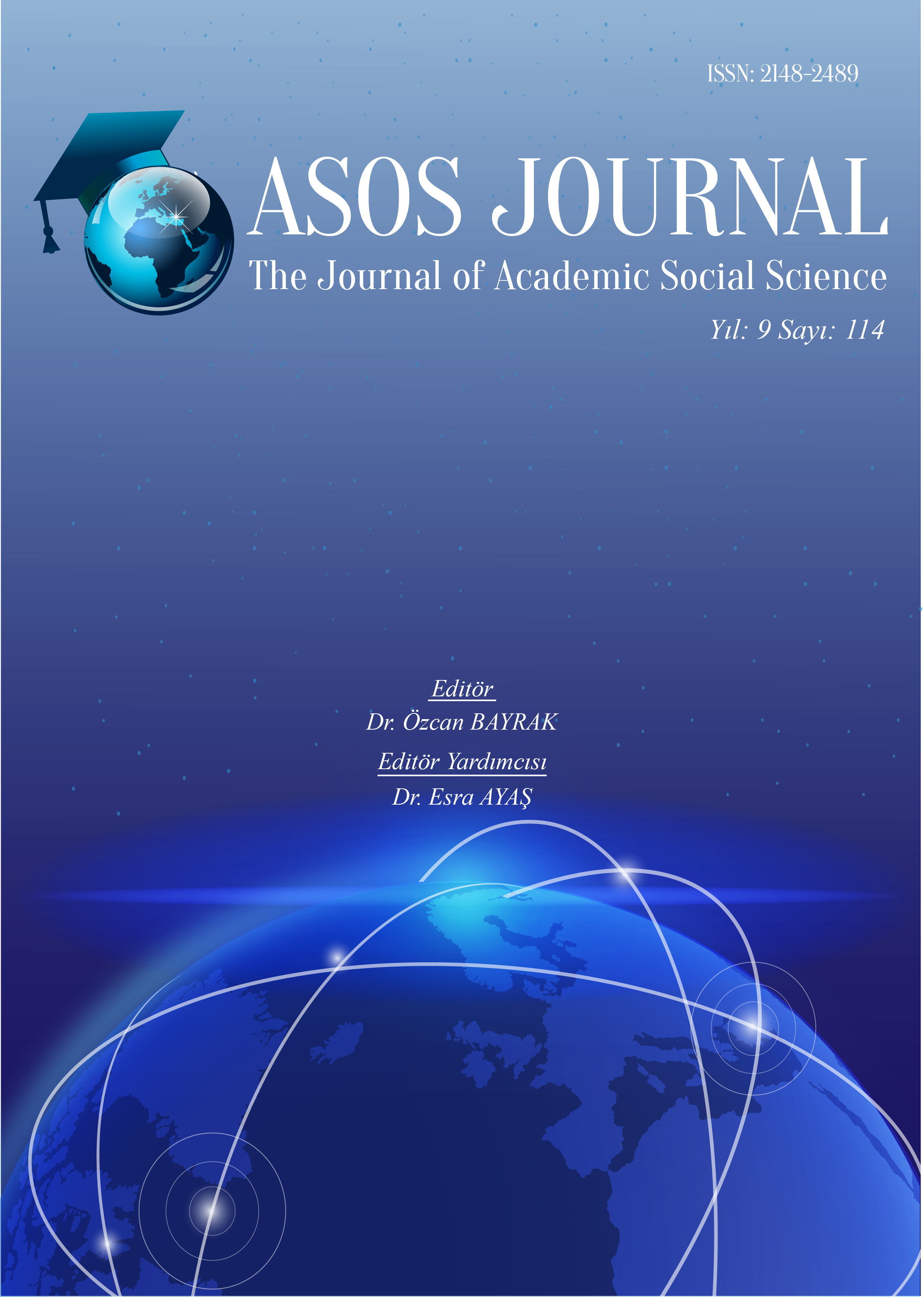Author :
Abstract
Sanat tayfı içerisinde kayıt sanatlarının en mimetik olanı sinema, var olduğundan bu yana hem diğer sanat türlerini derinden etkilemiş hem de onlardan beslenmiştir. Disiplinler arası bir saha olan sinema ayrıca sosyal ve beşeri bilimlerle de güçlü bağlara sahiptir. Özellikle bu çalışma tarih-sinema ilişkisi bağlamında toplumsal hareketlerin yeniden üretimine kaynaklık eden filmlere odaklanarak klasik toplumsal hareketlerin en tipik örneklerinden biri olan Braveheart filmini ikonolojik bir analize tabi tutmuştur. Erwin Panofsky’nin ikonografik ve ikonolojik eleştiri yöntemiyle analiz edilerek incelenen bu film öncelikle 4 bölümden meydana gelen yeni bir anlatı izleğine yerleştirilmiştir. Daha sonra bu anlatı izleğini yansıtan mizansenler doğal anlam, uzlaşmalı anlam ve içsel anlam-içerik bakımından irdelenerek toplumsal hareketin alan yazında yer alan izlerinin sinemada yeniden nasıl üretildiği tespit edilmeye çalışılmıştır. Ayrıca bu anlam alanları irdelenirken film evreninde yer diyaloglara da yer verilmiştir. Çalışmada kullanılan ikonolojik çözümleme yöntemi tarihsel bağları nedeniyle toplumsal bir hareketin sinemasal anlatı içerisinde nasıl yeniden üretildiği daha net ortaya koymaktadır. Çalışma ayrıca William Wallace’ın tarihi açıdan alan yazındaki klasik toplumsal hareketlerin tüm tipik ve trajik unsurlarını yansıttığı ortaya çıkmıştır.
Keywords
Abstract
Cinema, the most mimetic of the recording arts in the art spectrum, has both deeply influenced and nurtured other art types since its existence. Cinema, which is an interdisciplinary field, also has strong ties with social sciences and humanities. Especially, this study focused on films that are the source of the reproduction of social movements in the context of the relationship between history and cinema, and subjected the film Braveheart, which is one of the most typical examples of classical social movements, to an iconological analysis. This film, which was analyzed and analyzed with Erwin Panofsky's iconographic and iconological criticism method, was first placed in a new narrative track consisting of 4 parts. Afterwards, the scenes reflecting this narrative theme were examined in terms of natural meaning, compromised meaning and internal meaning-content, and it was tried to determine how the traces of the social movement in the literature are reproduced in cinema. In addition, while examining these areas of meaning, dialogues are also included in the film universe. The iconological analysis method used in the study reveals more clearly how a social movement is reproduced within the cinematic narrative due to its historical ties. The study also revealed that William Wallace reflects all the typical and tragic elements of classical social movements in the literature in terms of history.
Keywords
- Akyürek, E. (1995). Erwin Panofsky ve “İkonografi ve İkonoloji Üzerine”- Bilime Adanmış Bir Yaşam (s. 7-20), İstanbul: Alfa Yayıncılık.
- Cömert, B. (2008). Mitoloji ve İkonografi, Ankara: De Ki Basım Yayım.
- Çetinkaya, D. (2018). Toplumsal Hareketler, Tarih Teori ve Deneyim. İstanbul : İletişim Yayınları.
- Esen, H. (2019, 12 18). İskoçya'dan yeniden bağımsızlık sesleri yükseliyor. 02 11, 2021 tarihinde https://www.aa.com.tr/: https://www.aa.com.tr/tr/analiz/iskocyadan-yenidenbagimsizlik-sesleri-yukseliyor/1676938 adresinden alındı
- http://www.bbc.co.uk/. (2014, September 19). Wars of Independence William Wallece. 02 08, 2021 tarihinde http://www.bbc.co.uk/: http://www.bbc.co.uk/history/scottishhistory/independence/features_independence_wall ace2.shtml adresinden alındı
- https://ortadunya.com/. (2014, Ağustos 02). Nam-ı Diğer Cesur Yürek (William Wallace 1272- 1305). 02 10, 2021 tarihinde https://ortadunya.com/: https://ortadunya.com/forum/viewtopic.php?t=20481&i=1 adresinden alındı
- https://tr.wikipedia.org/. (2021, Ocak 15). Cesur Yürek. 02 12, 2021 tarihinde https://tr.wikipedia.org/: https://tr.wikipedia.org/wiki/Cesur_Y%C3%BCrek adresinden alındı
- https://www.haberler.com/. (2014, 09 19). İskoçya Bağımsızlığa "Hayır" Dedi William Wallace'ın Kemikleri Sızladı! 02 12, 2021 tarihinde https://www.haberler.com/: https://www.haberler.com/iskocya-bagimsizliga-hayir-dedi-william-wallace-6499416haberi/ adresinden alındı
- https://www.imdb.com/. (2020, 01 01). https://www.imdb.com/. 02 12, 2021 tarihinde Mel Gibson: https://www.imdb.com/name/nm0000154/?ref_=rvi_nm adresinden alındı
- https://www.sabah.com.tr/. (2019, Mart 03). Braveheart - Cesur Yürek filminin konusu. 02 12, 2021 tarihinde https://www.sabah.com.tr/: https://www.sabah.com.tr/kultursanat/2019/03/30/braveheart-cesur-yurek-filminin-konusu adresinden alındı
- Işık, G. (2011). Toplumsal Hareketler, Politikadan Edebiyata, Sanattan Sinemaya, Medyadan Toplumsal Algıya, Teorik ve Pratik Analizler ve Yansımalar. Ankara: Nobel Yayıncılık.
- Johnston, H., Laraña, E., & Gusfield, J. R. (2016). Kimlikler, Şikâyetler ve Yeni Sosyal Hareketler. K. Çayıt içinde, Yeni Sosyal Hareketler (s. 121-156). İstanbul: Kaknüs
- Koca, M. (2020). Toplumsal Hareketler: Kavramsal ve Kuramsal Bir Çerçeve. E. Karakoç, & O. Taydaş içinde, Toplumsal Hareketler ve Medya, Kavramlar, Kuramlar Ve Tartışmalar (s. 39-72). Konya: Literatürk Academia.
- nfku.com. (2020, Mayıs 04). William Wallace Kimdir? İskoçların Cesur Yüreğinin Hayatı Kahramanlığı. 02 05, 2021 tarihinde nfku.com: https://www.nkfu.com/william-wallacekimdir-iskoclarin-cesur-yureginin-hayati-kahramanligi/ adresinden alındı
- Panofsky, E. (2018). İkonoloji Araştırmaları: Rönesans Sanatında İnsancıl Temalar (Çev. Orhan Düz), İstanbul: PinhanYayıncılık.
- Touraine, A. (2015). Demokrasi Nedir? (O. Kunal, Çev.) İstanbul: Yapı Kredi Yayınları.
- Uysal, A. (2009). Toplumsal Hareketler İçin Kaynak Yaratma Ve Kullanma Stratejileri. Eskişehir Osmangazi Üniversitesi Sosyal Bilimler Dergisi, 217-238.
- Vogler, C. (2012), Yazarın Yolculuğu (Çev.Kenan Şahin) İstanbul: Okyanus Yayınları





